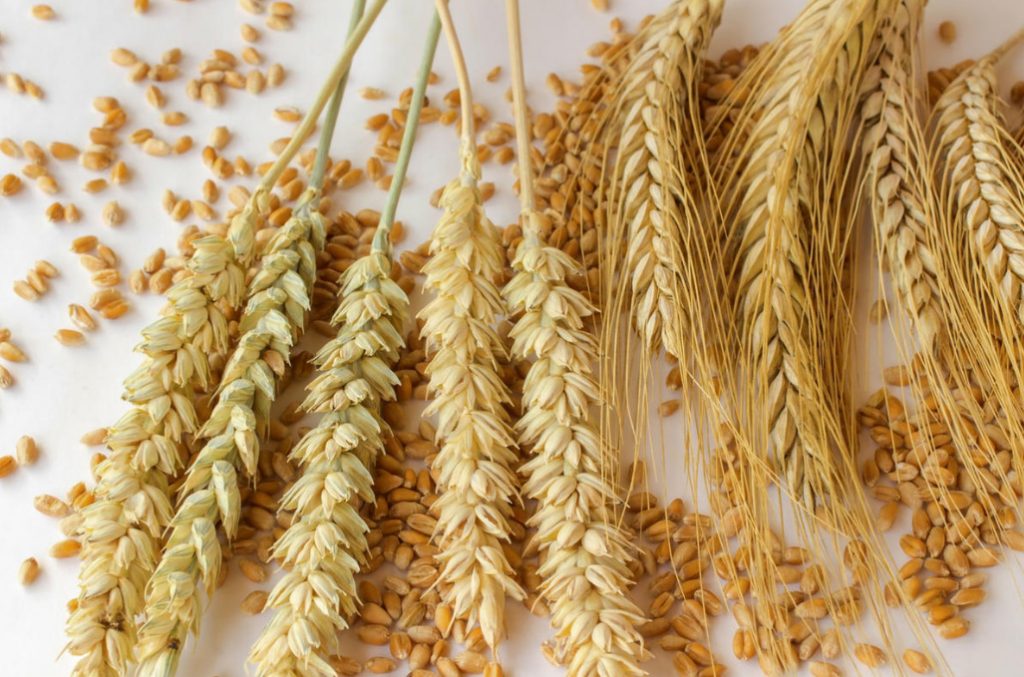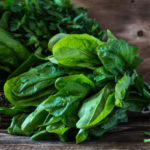To get high-quality moonshine, it is important to put a good Braga. There are a great many recipes for cooking it. We found proven and detailed recipes for Braga from corn grits or flour, grain (rye, wheat, barley, oats), regular rice, starch (potato or corn). Let’s consider the technology of making Braga from these ingredients step by step.
Braga from corn
Americans are famous for their love of corn moonshine. If the drink is produced in the United States, then after two years of aging in new oak barrels burned from the inside, it has the right to be called Bourbon.

To prepare an analogue at home, we use corn grits or flour, sugar-coated with any type of malt (barley, rye, wheat). This is a classic technology, even in America, corn for Bourbon is not sprouted, since the yield of moonshine is significantly reduced. Theoretically, from 1 kg of corn raw materials, you can get 0.845 liters of distillate with a strength of 40%, the practical losses are usually 10-15%. Also, the yield will increase slightly due to malt.
Ingredients:
- corn grits (flour) – 1.5 kg;
- malt – 300 g;
- water – 7 l;
- dry yeast – 5 g (or 25 g pressed).
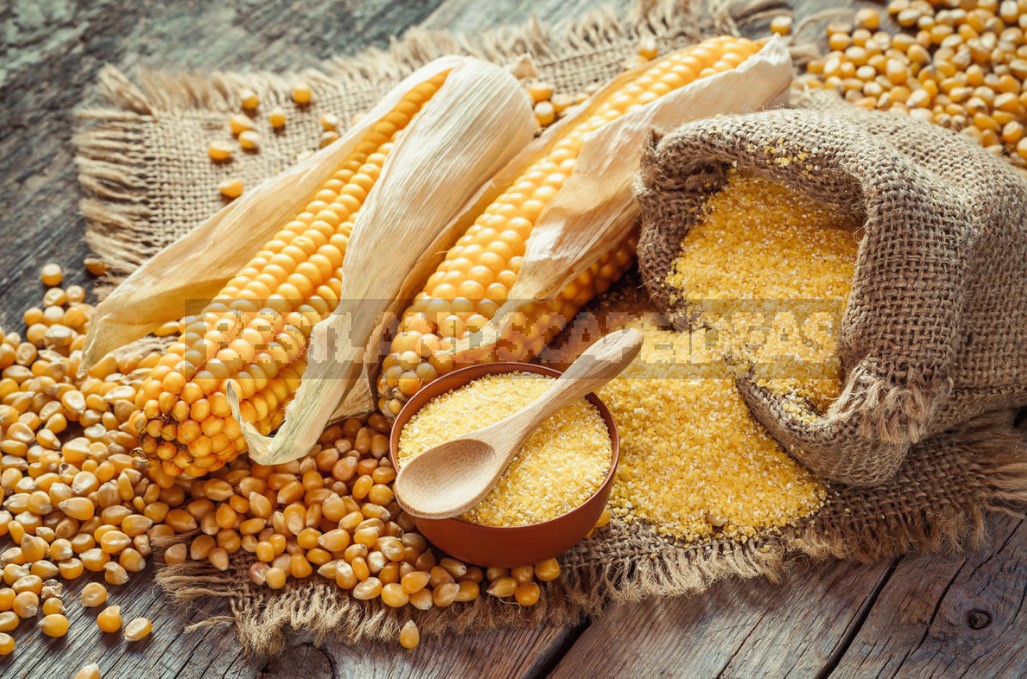
The choice between flour and cereals is not important, it does not affect the quality and yield of moonshine. Malt (egg, rye or wheat) is needed for saccharification of corn raw materials. Without malt, corn Braga will not ferment.
Recipe:
1. Heat the water to 50°C. it is Better to use a water bath, thanks to which the jam (porridge) will not burn, and it will be easier to control the temperature. It is enough to put a large pan on the stove, then set a smaller diameter pan on top, in which the corn mash will be cooked. In a smaller pot, pour 6 liters of water, fill a large one with water for 2/3 of the volume.
2. Slowly pour the flour (grits) into the hot water of a smaller pan, stirring constantly. Boil the porridge for 15 minutes at the same temperature, stirring occasionally so that the mixture does not thicken and lumps do not appear on the bottom.
3. Raise the temperature to 65°C and maintain for 15 minutes, stirring the porridge.
4. Add 1 liter of water to the mash, heat to 75-80°C, then hold the temperature for 20 minutes. You can cover it with a lid.
5. To prepare malt (soaked and germinated seeds of cereals) to make. Dry crushed to coarse grinding, if you use green (detailed technology of its preparation is described below) – grind in a meat grinder.
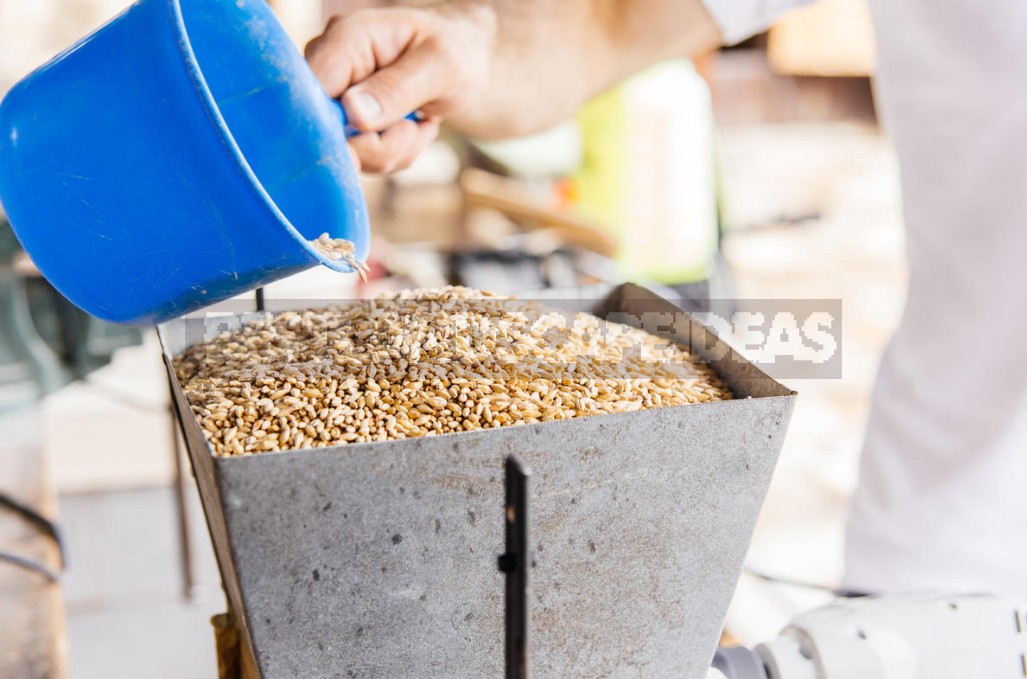
6. Cool the mash to 65°C, add the malt, and stir until smooth. Close the pan with a lid, wrap it in an old blanket and put it in a warm place for 7 hours. During this time, the jam will sugar and become sweet to the taste.
7. Dilute the yeast according to the instructions on the label. Lower the mash temperature to 25-29°C (add cold water or cool the container itself), then add the diluted yeast and mix.
8. Pour the wort into the fermentation tank, install a hydraulic seal on the neck. Move the container to a dark place at room temperature (+18…+30°C).
9. After 3-7 days, the corn Braga will become lighter, the water gate will stop letting gas (the glove will blow off), there will be an alcoholic smell and a bitter taste without sweetness. This means that it’s time to do the distillation.
From barley (wheat, oats, rye) on wild or ordinary yeast
The proposed recipe is suitable for barley, wheat, rye, oats or mixtures of different grains in certain proportions. You need high-quality grain that has lain for at least 2 months (preferably 5-6 months), but not older than 3 years, since old cereals have a lower germination capacity. You can replace artificial dry and baking yeast with a pre-prepared grain starter.
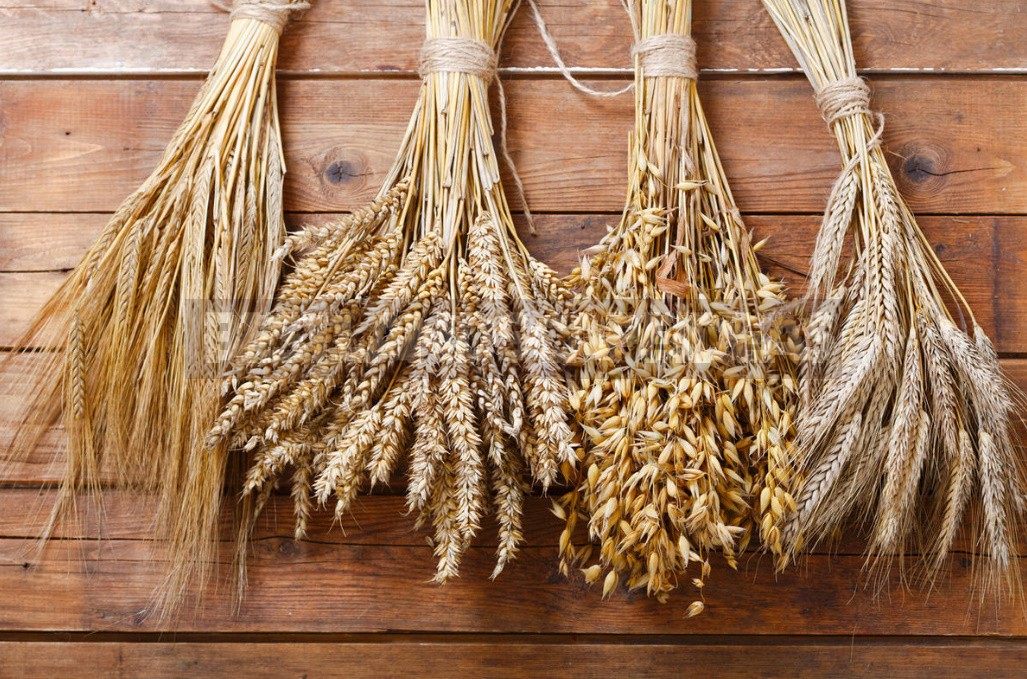
The advantage of this method is that even if there are errors in the distillation technology, the moonshine will not have a characteristic yeast smell. Lack of – on the surface grain “wild” yeast remain not always, often sourdough not ferments or infects wort pathogenic microorganisms, for example mold.
In the recipe, we will separately consider the method of preparing grain sourdough.
On average, 1 kg of malt can saccharify 4-5 kg of regular grain, but if possible, I recommend sprouting as much as possible, since this contributes to the complete breakdown of starch, increasing the yield.
Ingredients:
- grain – 6 kg;
- water-27 l;
- yeast (optional) – 12 g dry or 60 g pressed.
Recipe:
1. Make a starter on the day of germination (only for moonshine without baking yeast): 100-150 g of grain twice with an interval of 10-15 minutes, rinse in cold water, removing the surfaced particles, dirt and husks. Put the cereals in an even layer of 2-3 cm in a plastic or metal container. Add water (should cover the grain layer by 1-2 cm). Cover the container and transfer it to a dark place at room temperature.
After 1-2 days, when the sprouts appear, add 50-75 g of sugar (such a small amount will not affect the quality of moonshine) for the normal development of yeast, mix with your hands. If the mass is very thick, pour a little water. Tie the neck of the container with gauze and leave it for 7-8 days. When there is foam, Fizz and a slight smell of fermentation, the grain starter is ready. To prevent souring, it is better to put the fermented starter under the water seal before adding it to the Braga.
2. Prepare the grain for green malt. At least 1 kg of peeled and sifted grain (based on the proportions in the recipe) is poured into a soaking container-an enameled pan or a plastic basin. Fill with water 3-5 cm above the level of cereals. After 8 hours, remove the floating debris and replace the water. Repeat the water change procedure twice more. The total soaking time is 24 hours.
3. Completely drain the water, the grain should become wet, but not wet. Spread out for germination with a layer of 5-10 cm. Top to speed up the process, you can cover with a damp cloth. The recommended germination temperature is 12-20°C, preferably with ventilation. Swollen and sprouted grain increases in volume, this should be taken into account when choosing a container, the stock should be at least 15 cm in height.
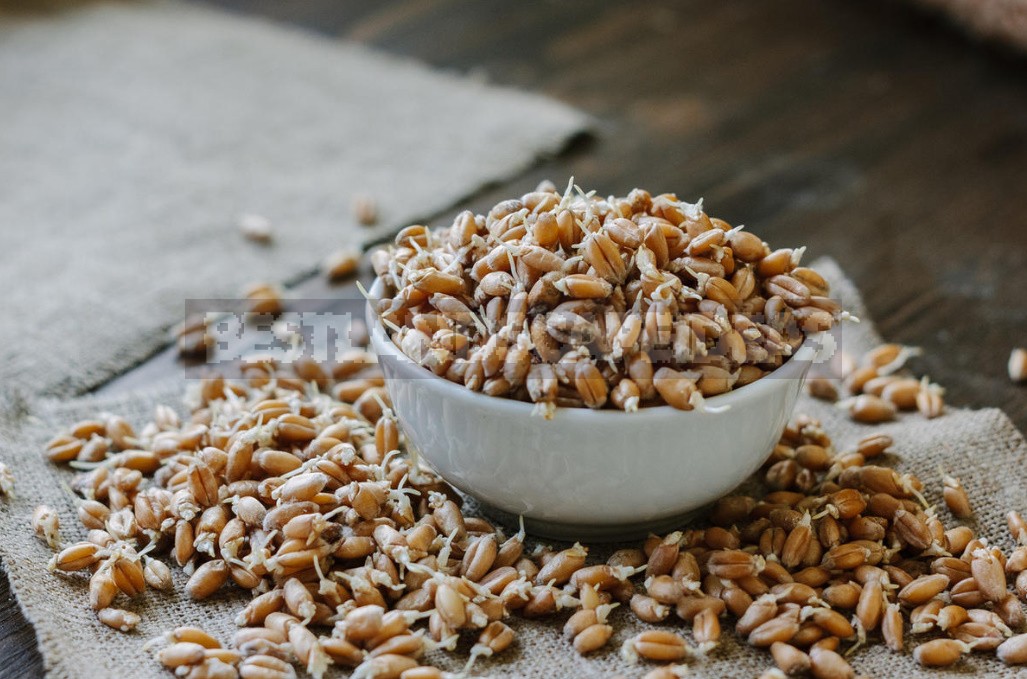
Every 8-12 hours, mix with your hands so that no carbon dioxide accumulates inside the layer. Dry grain should be sprayed as needed, but water should not accumulate at the bottom of the container. Germination lasts 6-10 days, until the length of the sprouts reaches 5-7 mm and they begin to intertwine with each other. When biting, sprouted cereals should be sweet-bitter, a slight cucumber smell may appear. The result is a “green malt”, which is best suited for saccharification, but it must be used for three days (preferably immediately), otherwise the activity of enzymes will significantly decrease.
To increase the shelf life of green malt, you can dry it at a temperature no higher than + 40°C and remove the sprouts. The humidity of the dried grain is not more than 3%. In a tightly closed container, the resulting “white” malt (i.e., dry) can be stored for years, but its saccharification efficiency is 20% lower than that of green. This should be taken into account when choosing proportions.
4. The resulting green malt (green with sprouts) is ground as small as possible in a meat grinder or other way. Add water warmed to 26-29°C (3 liters per 1 kg of malt). As a result, you will get a “malt milk” that you need to use during the day. When working only with pure malt (without flour), after adding water, heat the mixture to 63°C and follow the steps described in step 9 (points 5-8 in this case should be skipped).
5. Unprocessed grain is crushed to the state of flour. It should be a maximum of 5 times more than malt (according to the recipe-5 kg). You can immediately take the finished flour.
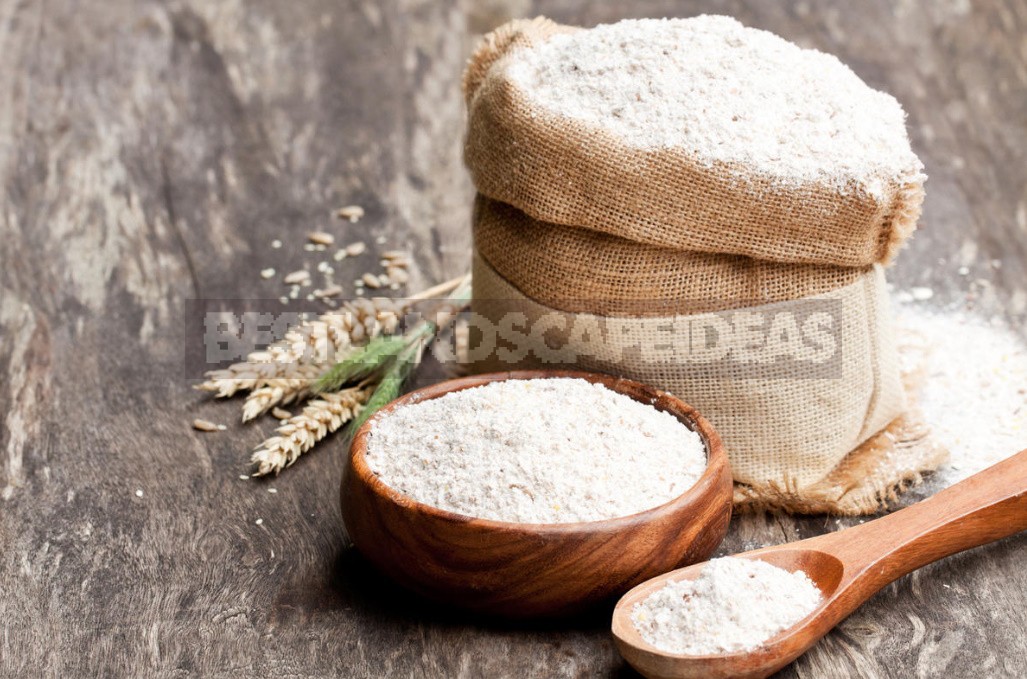
6. Pour the flour into a cooking container – a pan or bucket. Pour a thin stream of water warmed to 50°C (at the rate of 4 liters per 1 kg of flour), stirring constantly to avoid lumps.
7. Preheat the mixture on the stove (in any other way) to 55-60°C, maintaining the temperature in the specified range for 15 minutes. Then increase to 62-64°C, maintain for another 15 minutes. After that, bring the wort to a boil and cook for 1.5-2 hours, stirring every 15 minutes so that the mixture does not burn from the bottom. The lower the quality of the grain and the larger the grinding, the longer it takes to cook, the mass should become homogeneous.
8. Cool the wort to 65°C and add the malt milk prepared in the fourth stage. Pour in a thin stream, stirring constantly. Cover the container with a lid and heat the mass to 63°C.
9. For the next 120 minutes, maintain a stable temperature of 55-65°C, stirring every 20-30 minutes. At the end of the process, the wort should become sweet. If the temperature exceeds 70°C, the enzymes will break down and saccharification will stop without the possibility of recovery!
10. Ready to ferment the wort as quickly as possible (so as not to infect pathogenic microorganisms) to cool to 28°C. the easiest option is to lower the container into a bath of cold water.
11. Pour the cooled wort into a fermentation tank and fill it with a maximum of 75% of the volume. Add yeast at the rate of 2 g dry or 10 g pressed per 1 kg of raw materials or starter. Stir. Yeast can be pre-diluted according to the instructions on the label. Put the container under the hydraulic seal or a medical glove with a hole in the finger (made with a needle). Transfer to a dark room with a stable temperature of +18…+27°C.
12. Depending on the quality of the yeast and the room temperature, the grain Braga ferments for an average of 4-7 days. Then the water gate stops releasing gas (the glove is deflated), the Braga becomes lighter, and a layer of sediment appears at the bottom. The taste is sour-bitter without sweetness. When these signs appear, you can start distilling.
